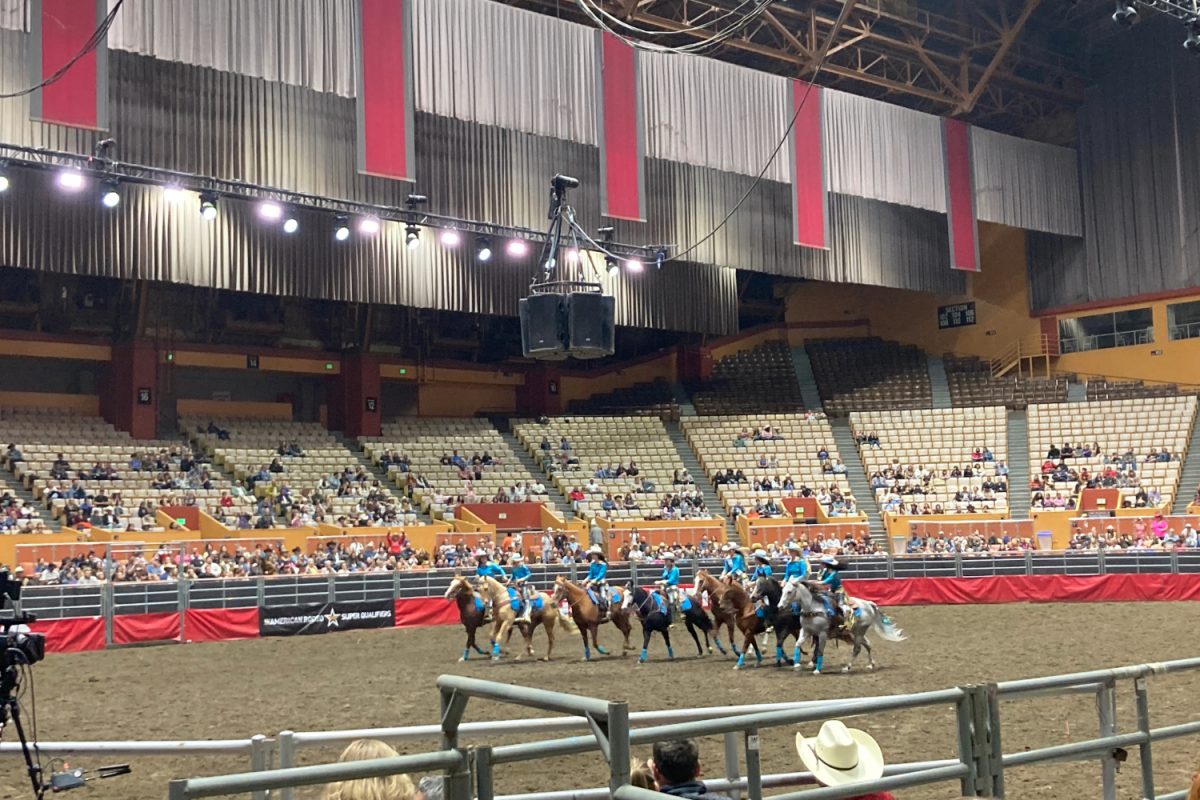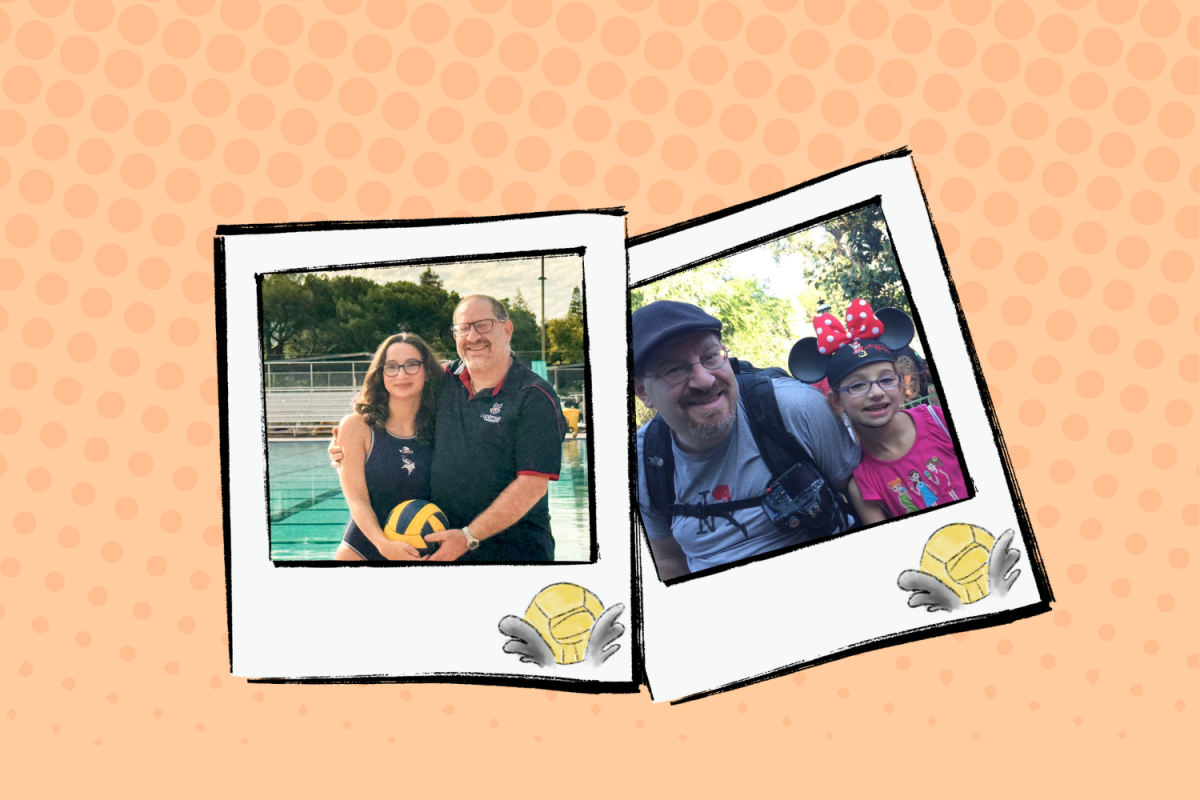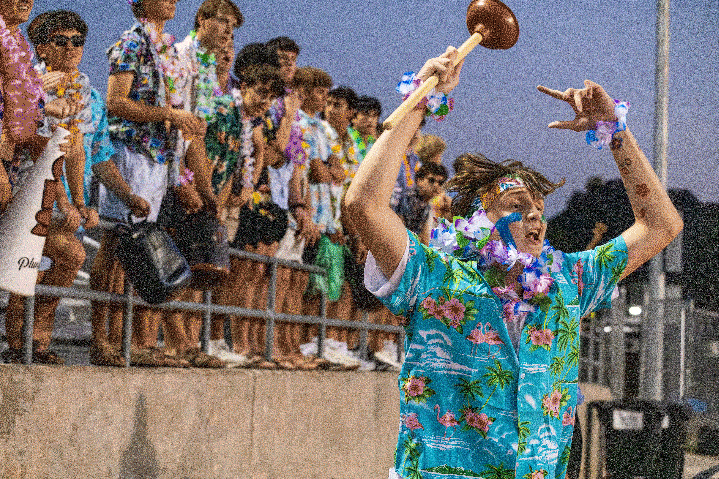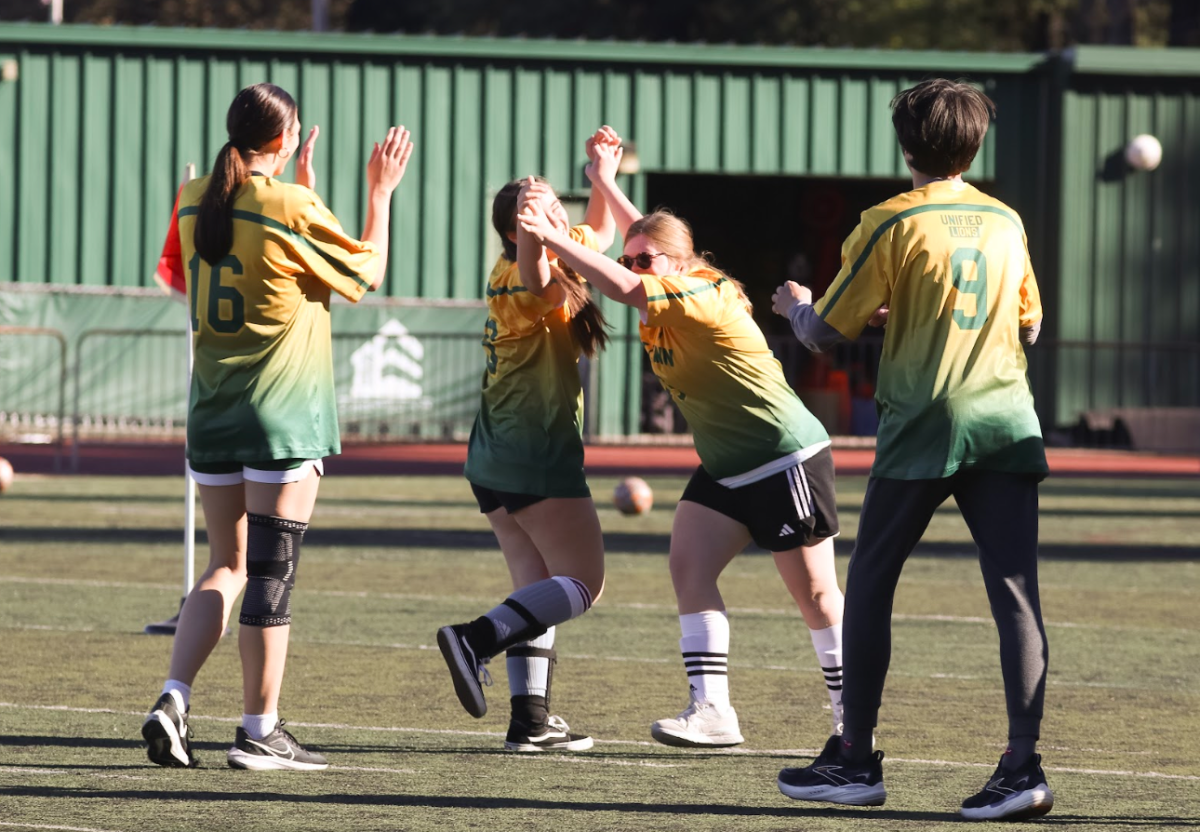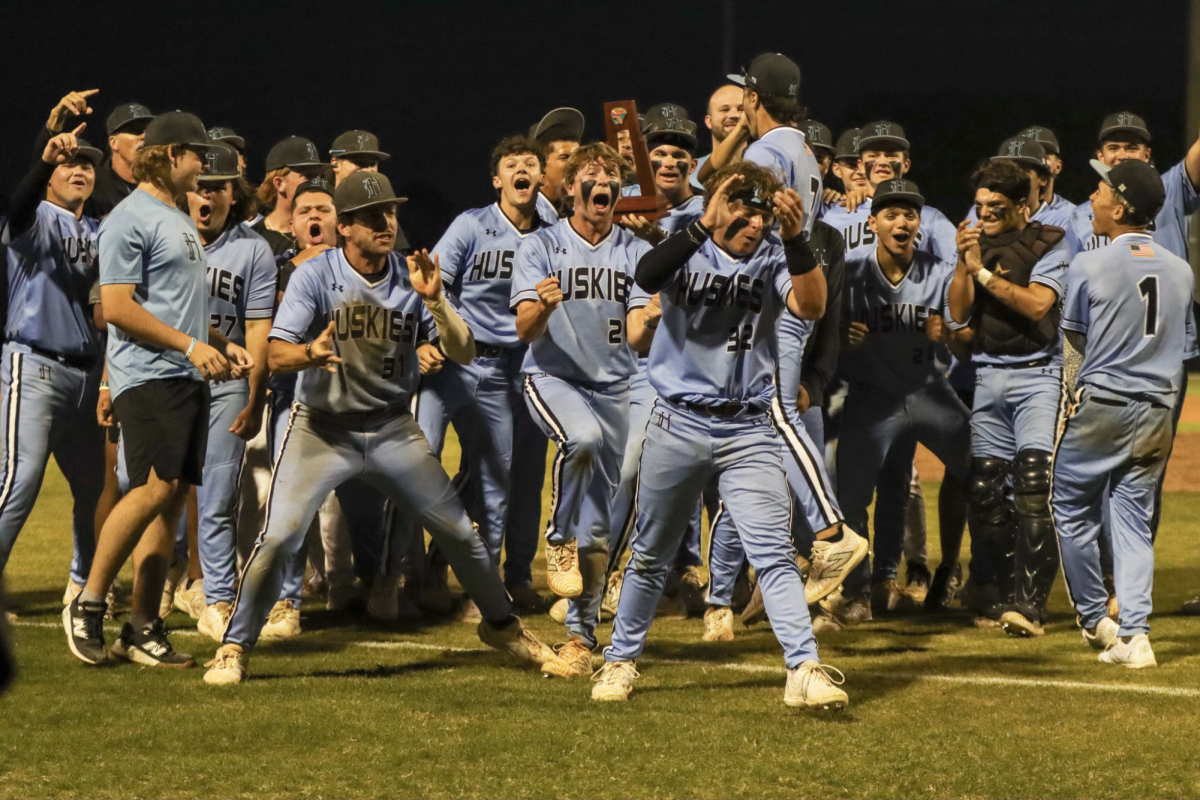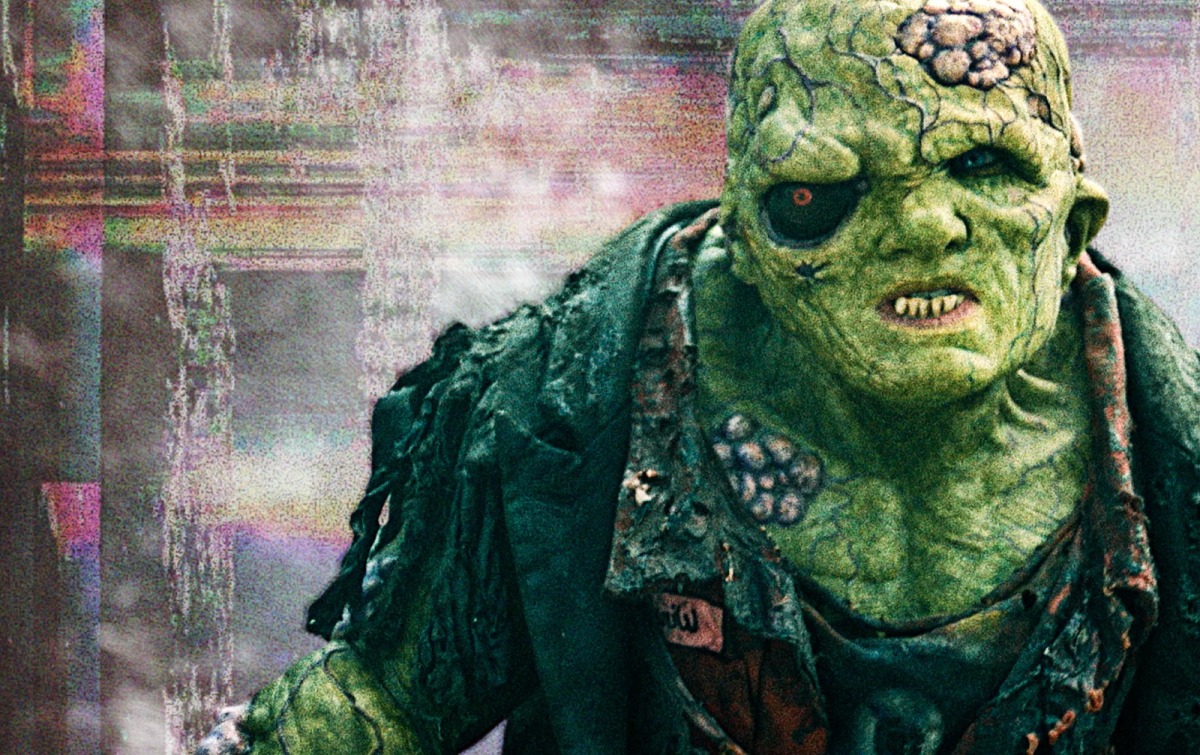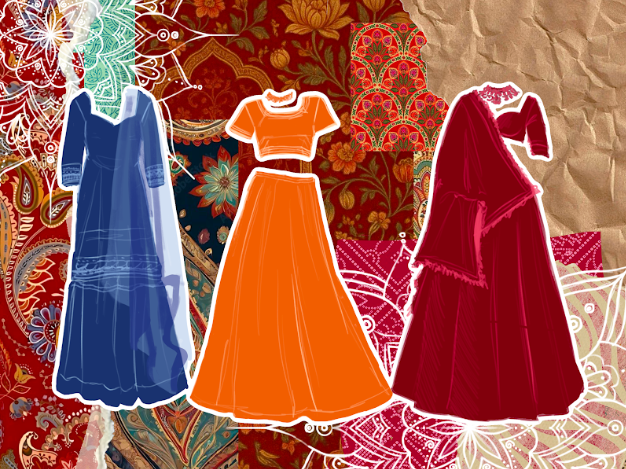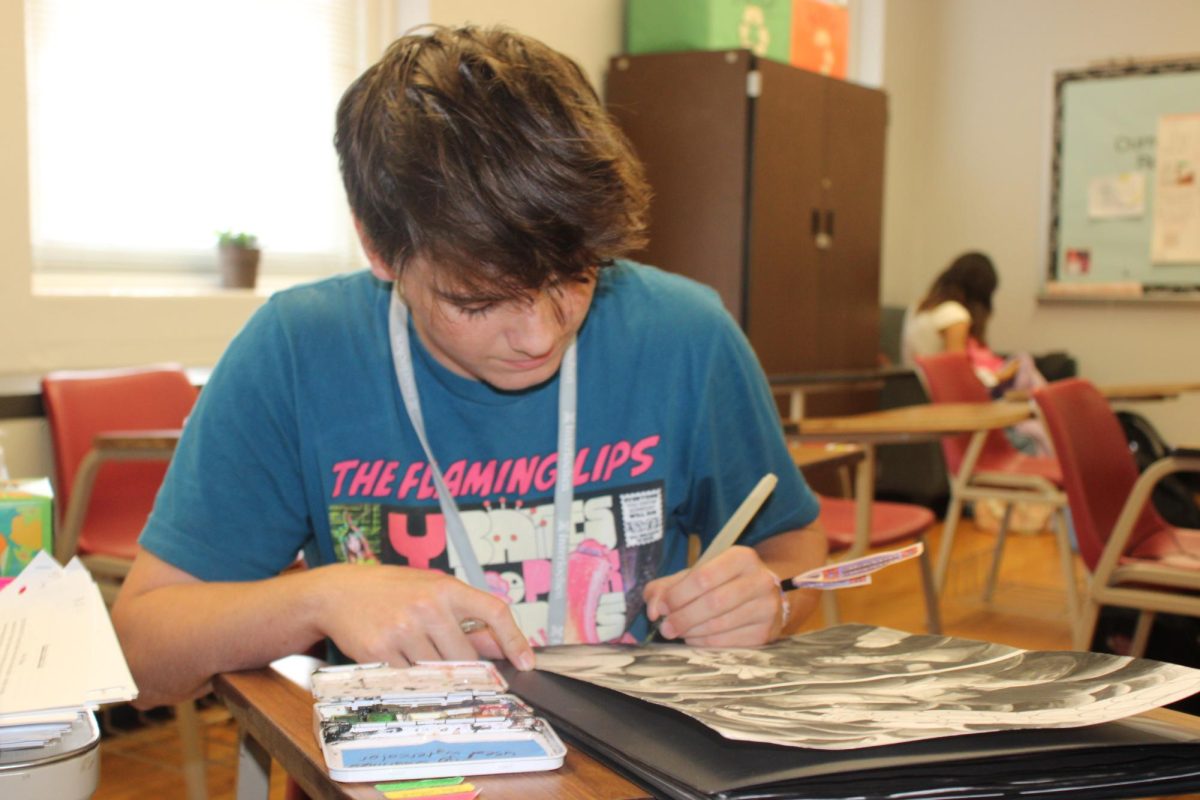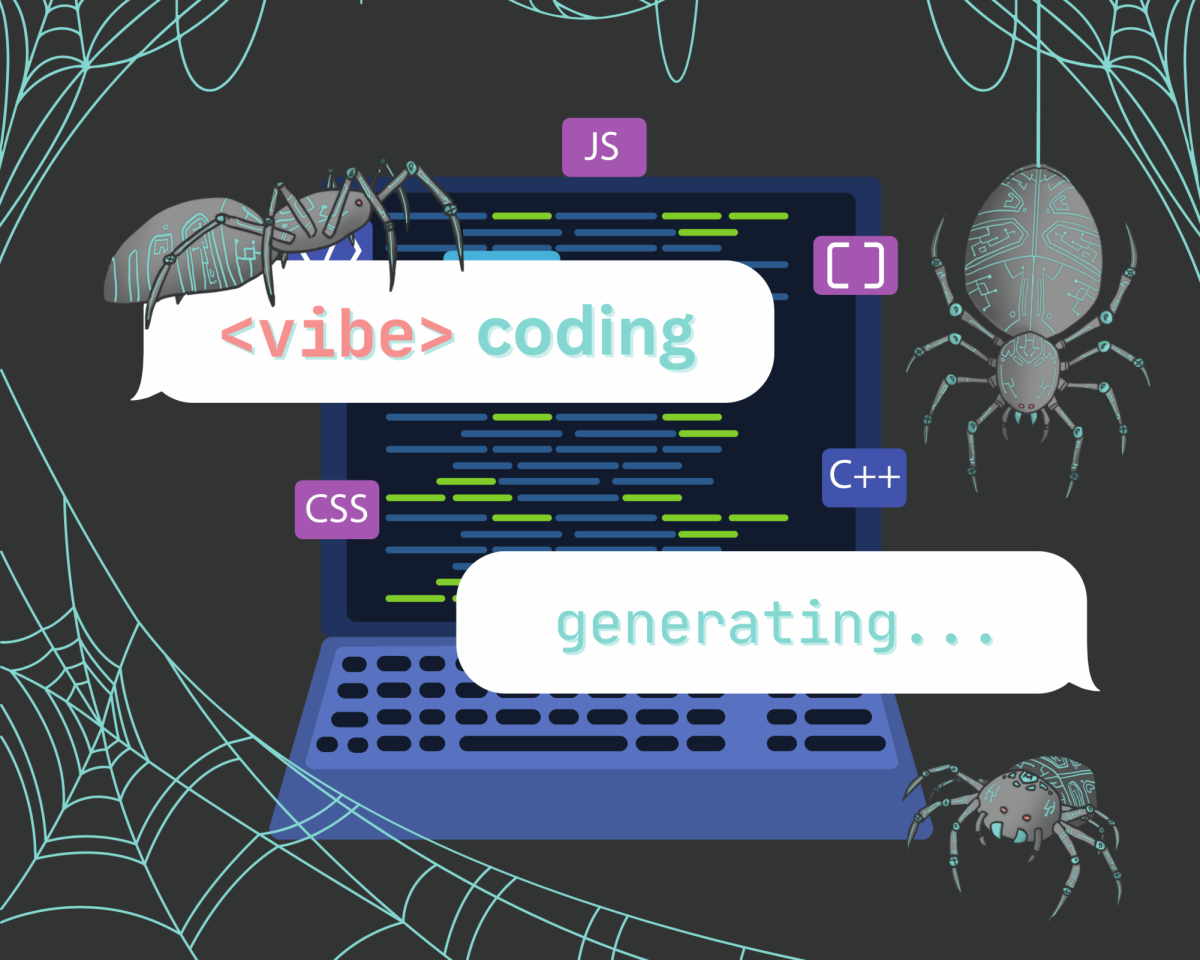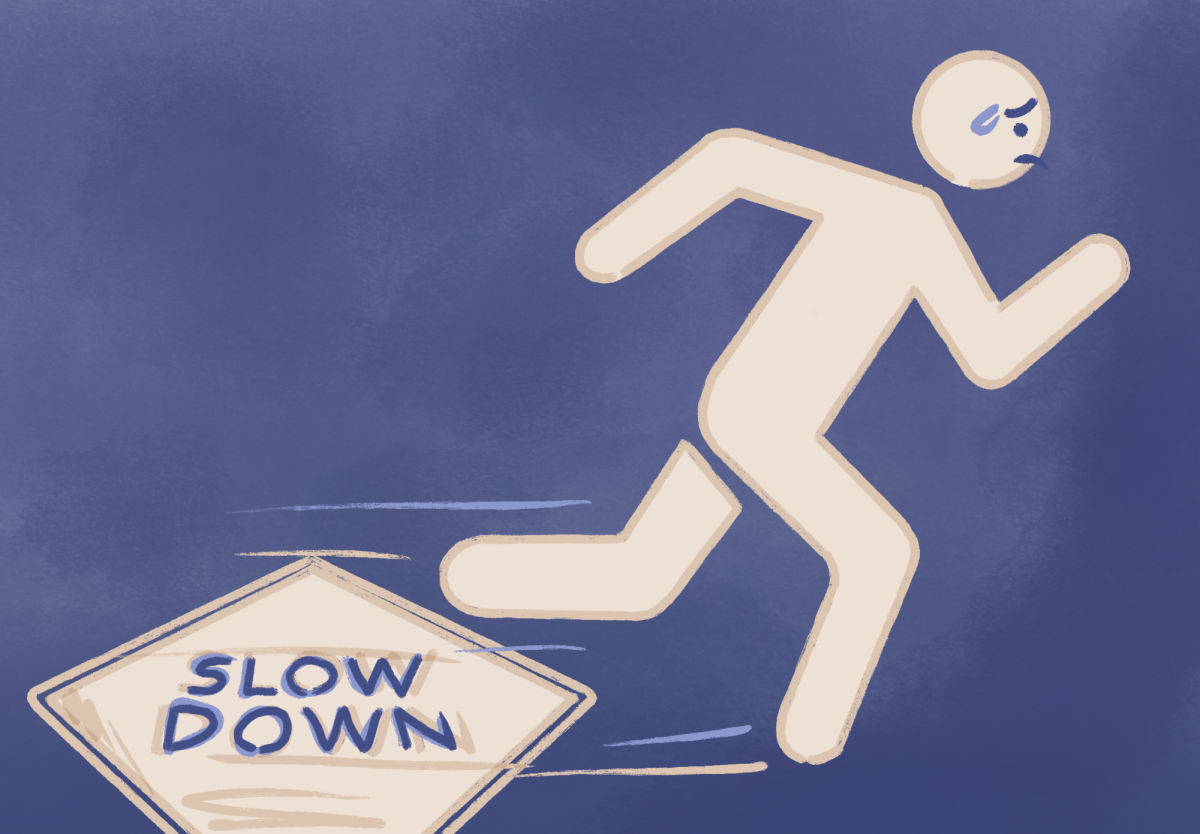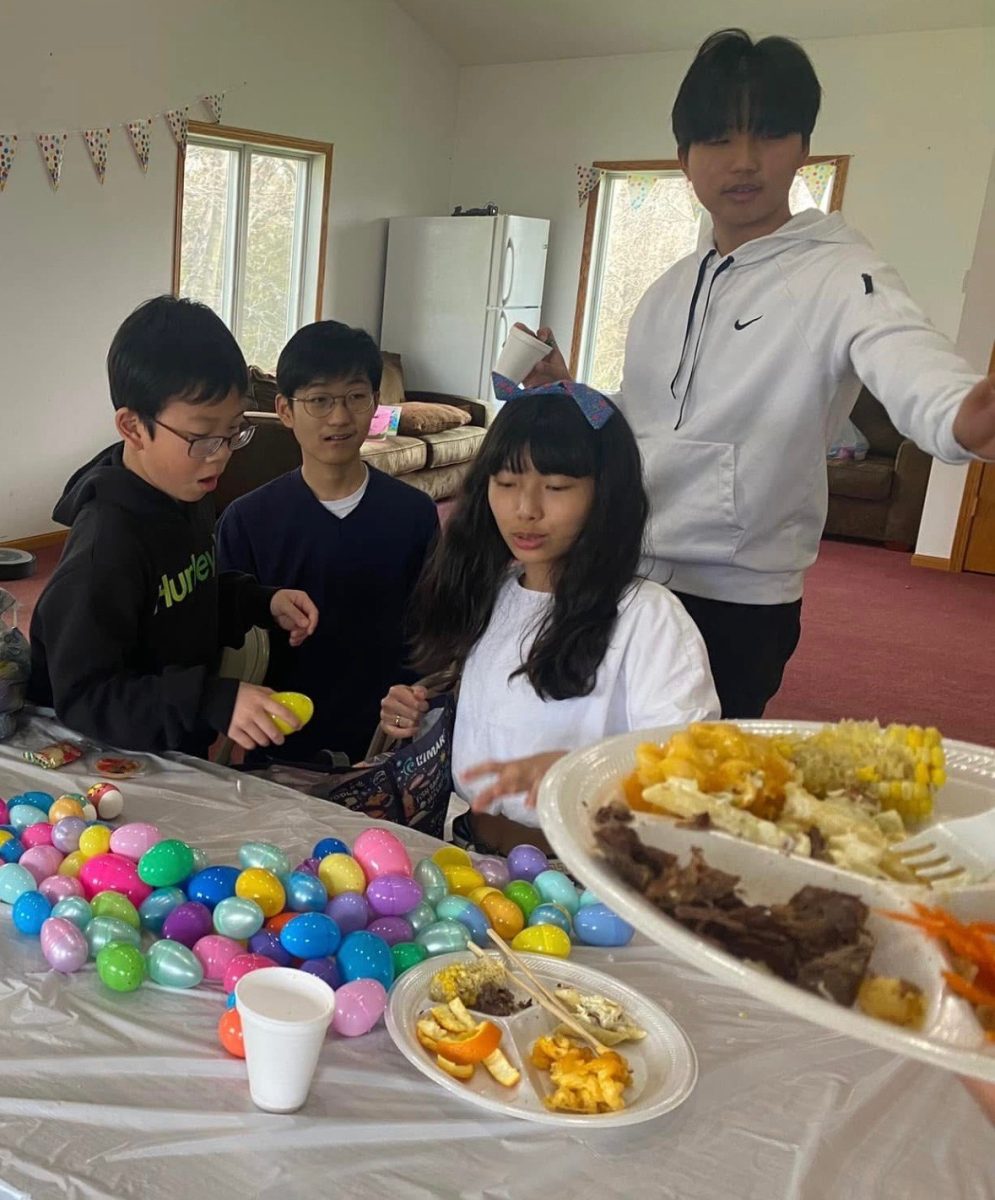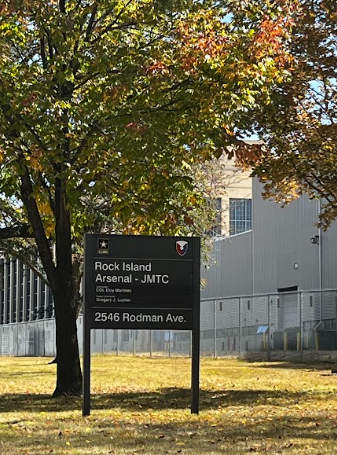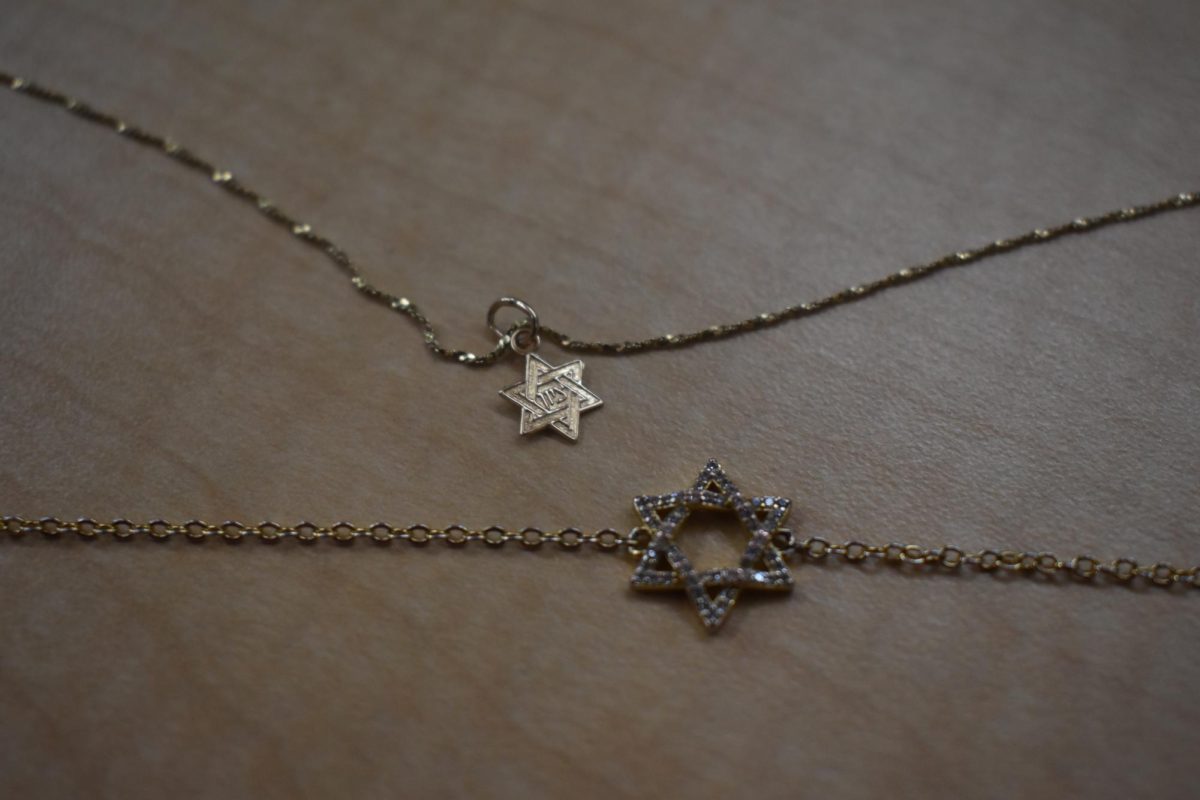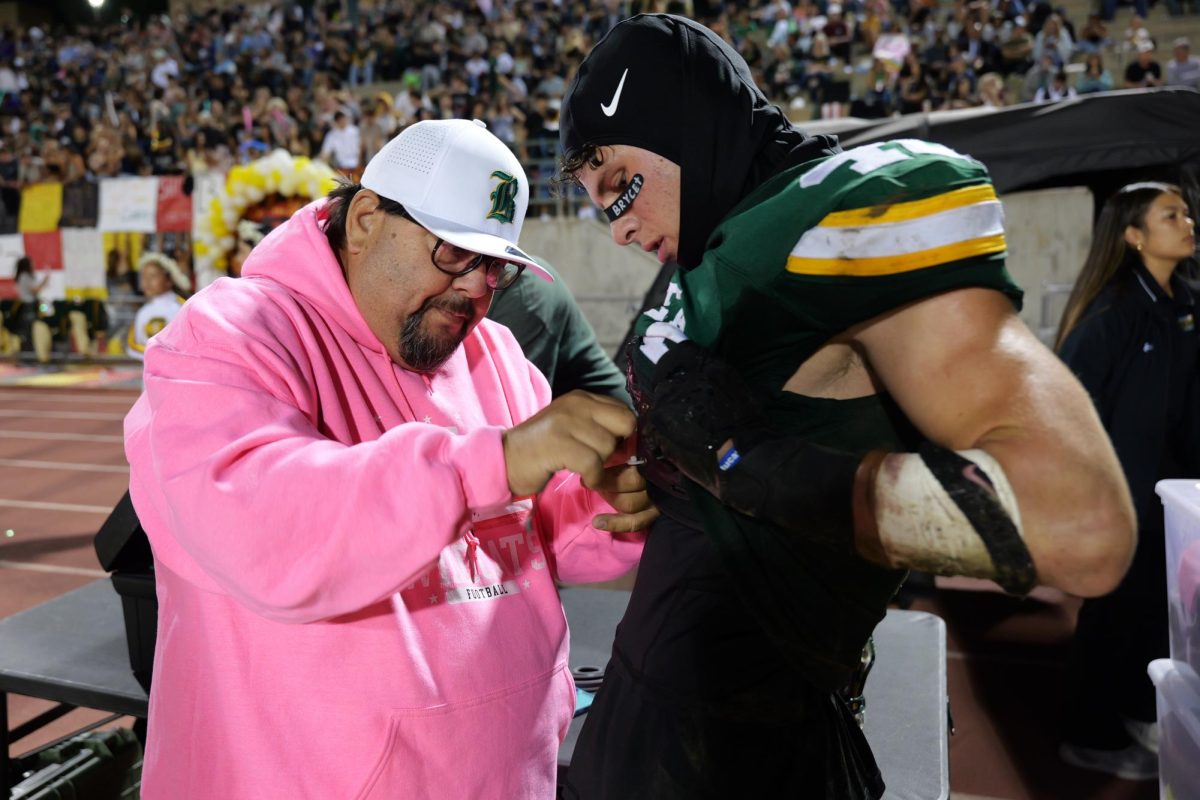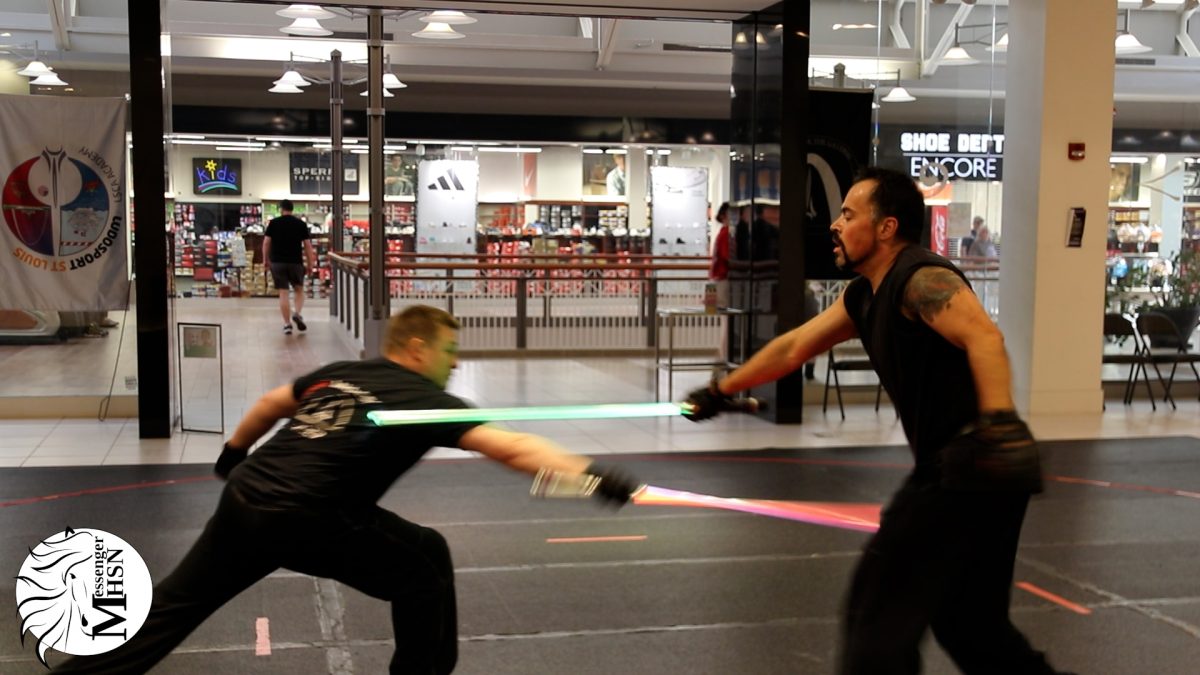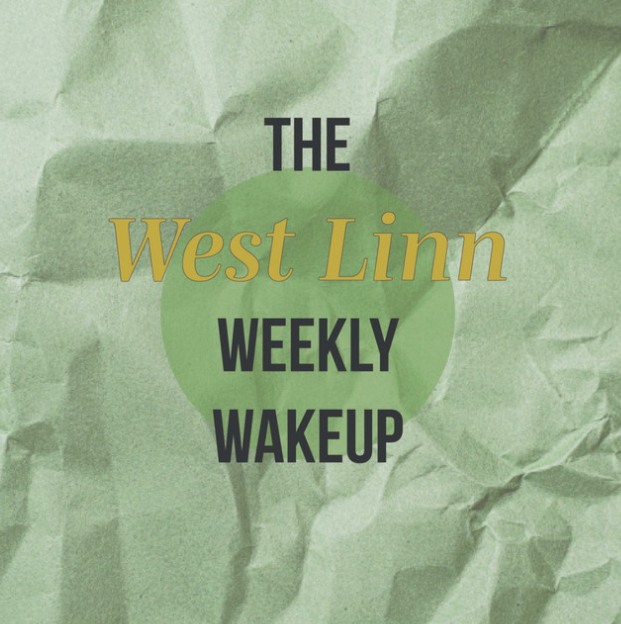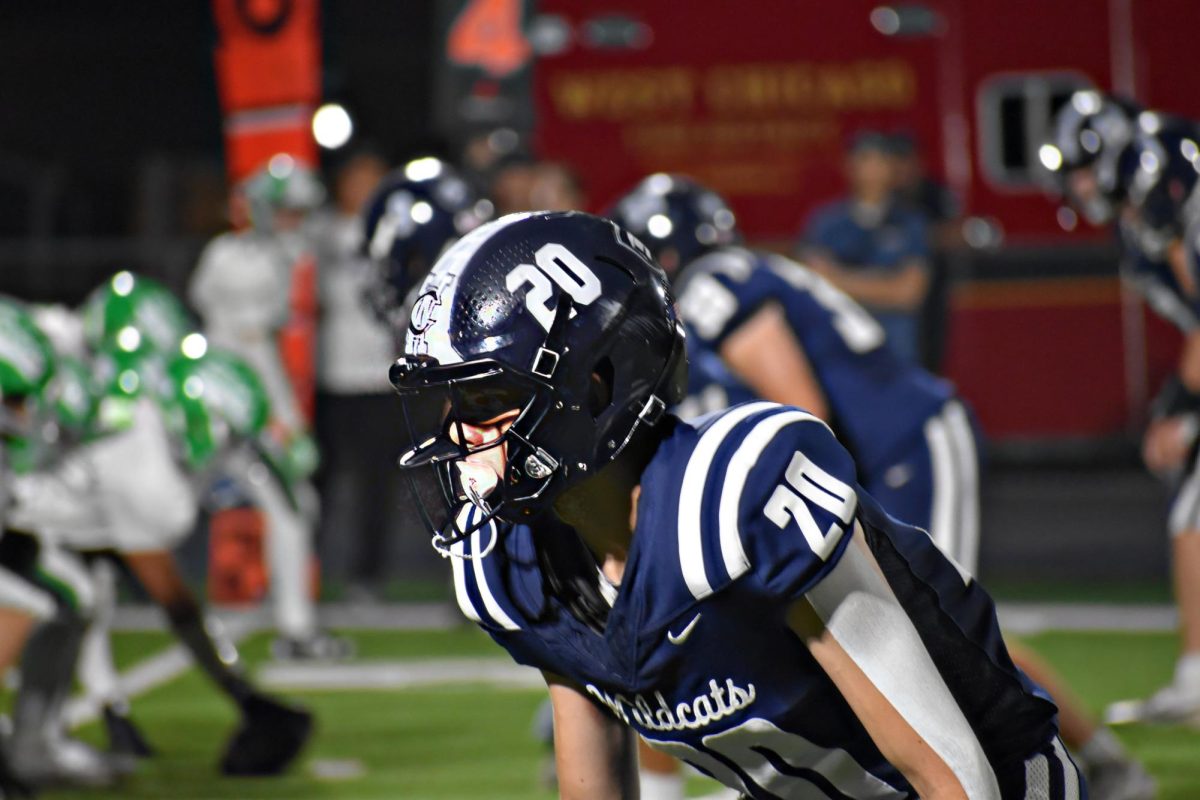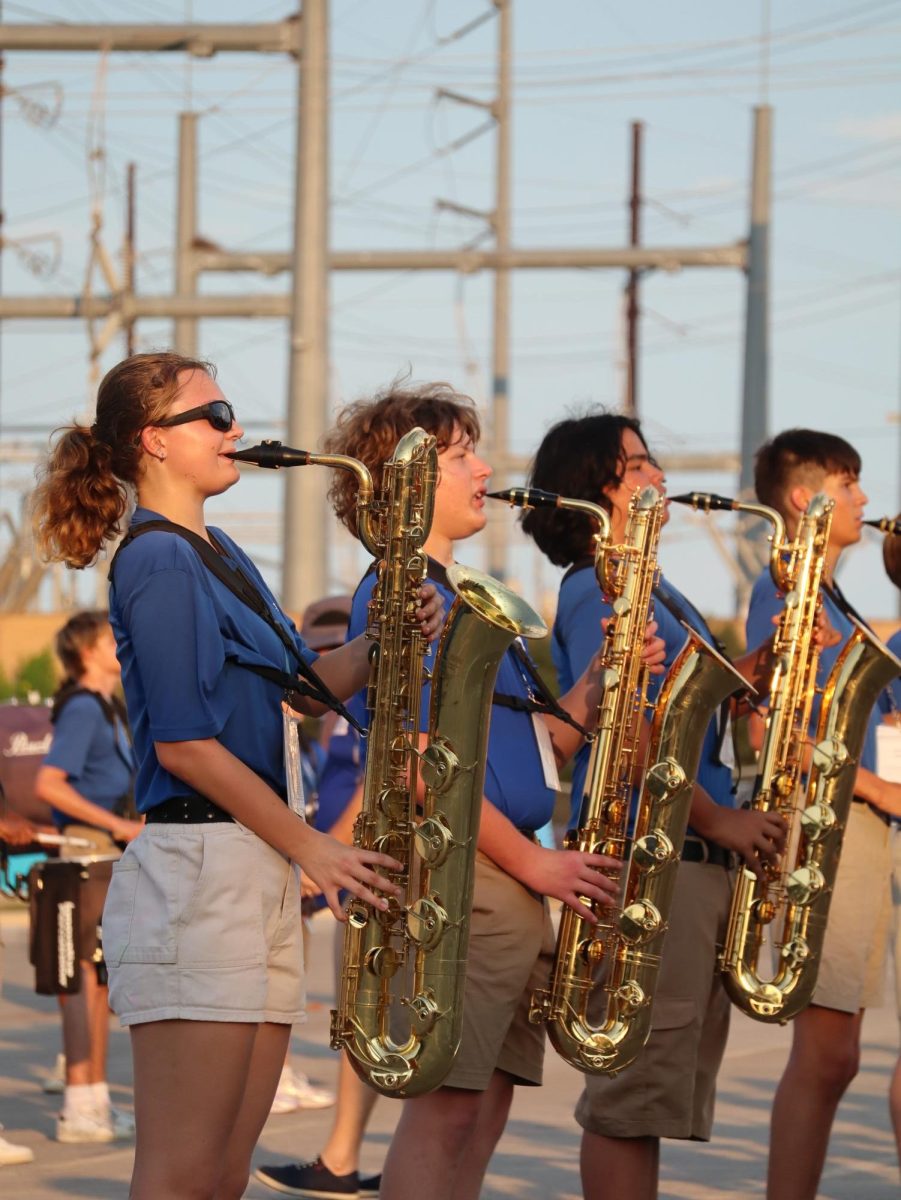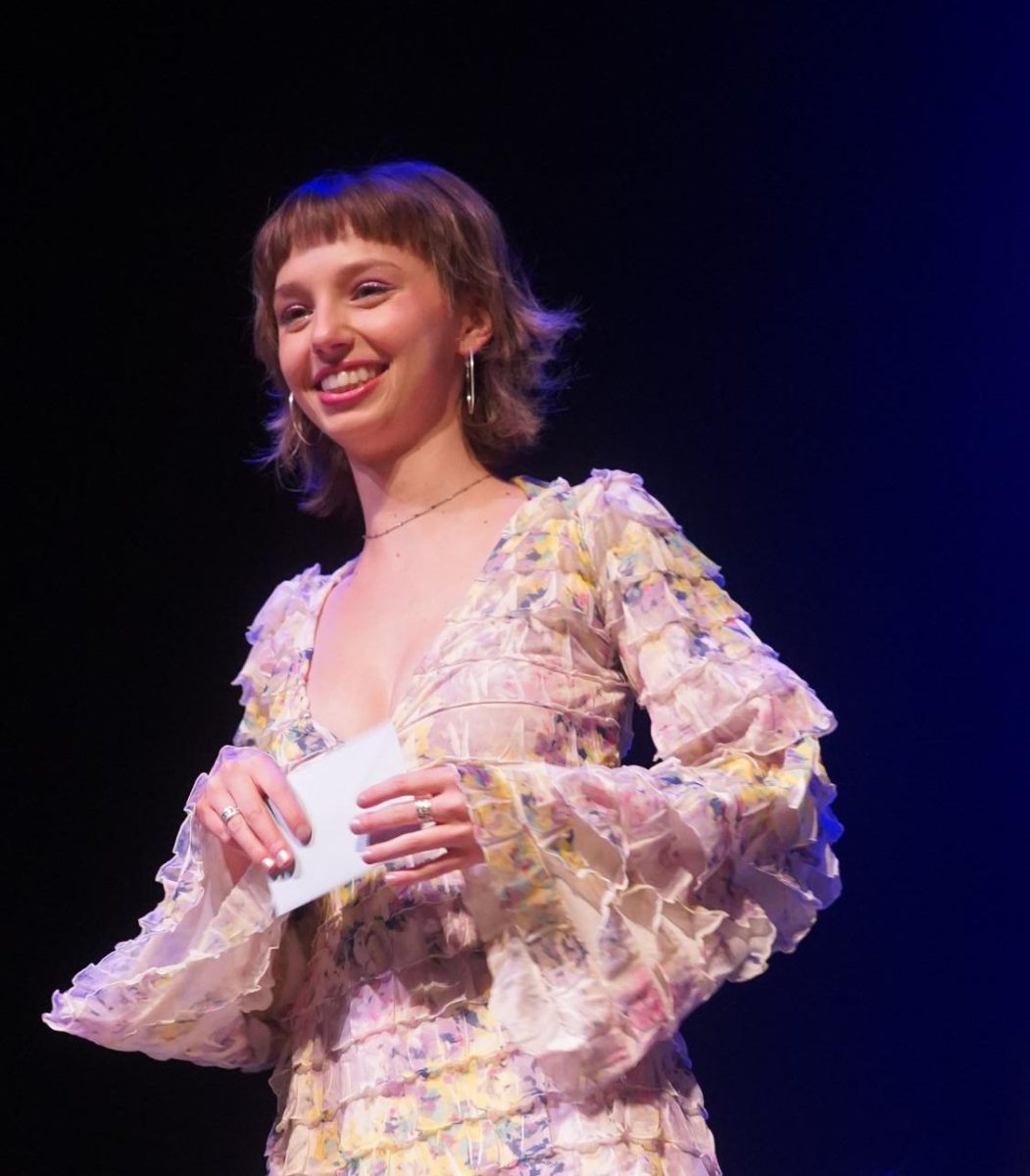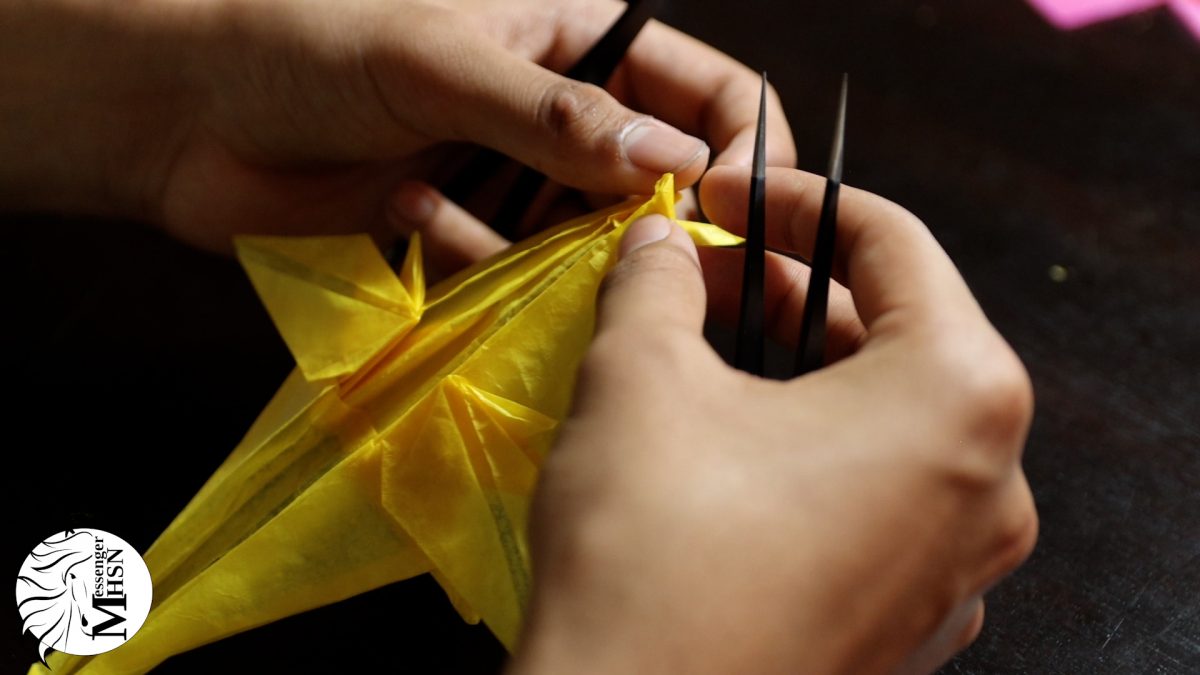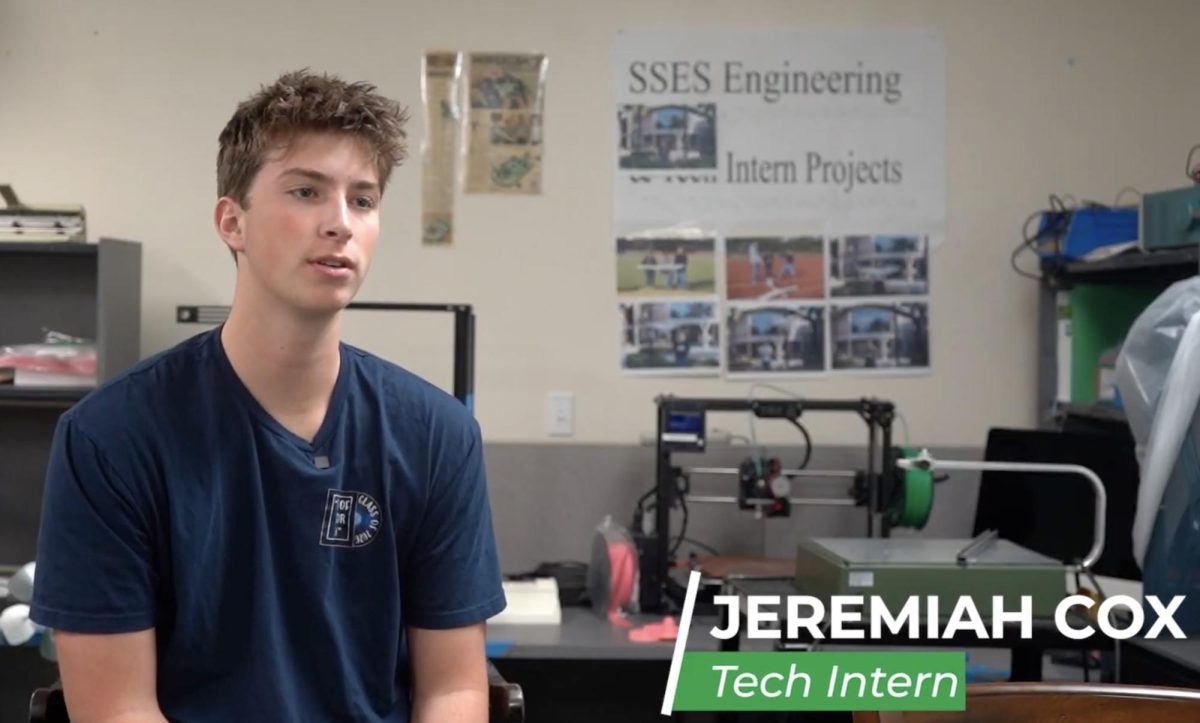Logan Vieira Martinez was going to play lacrosse in college. He wanted to become a Marine.
Then, he was diagnosed with an incurable brain disorder, and his trajectory changed.
Following family tradition, he became a professional bull rider and recently competed in the American Qualifier Men’s Bull Riding event at the historic Cow Palace in Daly City.
“He was a high school lacrosse superstar. After his diagnosis, he couldn’t play contact sports anymore. God said he had to do something else, so now he’s a rodeo cowboy,” said Robin Vieira, Vieira Martinez’s mother.
The rodeo family
The Vieiras’ history in rodeo stretches for generations. Robin Vieira’s grandfather, maternal uncles, paternal uncles, and her husband’s family have all participated in different rodeo disciplines, from bull and bronc riding to team roping. The family is of Portuguese and Native American descent, hailing from the Pitt River tribe, which Vieira believes is a key element in their rodeo participation. She noted the prevalence of Portuguese bull riders, as well as the prominence of the Native American rodeo circuit in areas like Northern California.
“It’s been a spark for me since I was a kid. I come from a family of cowboys, and I wanted to ride like them,” Vieira Martinez said.
Becoming a professional bull rider has not only brought him closer to his family but also given him a new one.
“The rodeo community is very welcoming. You want the next person to be better than you because you want to open the rodeo to more people. Women can ride bulls, boys can ride bulls. It doesn’t matter. There are Latinos, there are African Americans, there are Pacific Islanders, and there are Asians. We all love each other because we’re all children of God. We all give our lives to him,” Vieira Martinez said.
Brittany Miller has observed a similar culture. Miller is an award-winning saddle bronc rider, or bucking horse rider, from Montana, who also competed at Cow Palace on Oct. 4.
That evening, Cow Palace held its second-ever Women of Rodeo show, showcasing the women’s breakaway, barrel racing, and bronc riding competitions in a super qualifier for the American Rodeo finals, as well as up-and-coming male bull riders like Vieira Martinez in a prequel to the following weekend’s men’s rodeo super qualifiers.
“From the last three years that I’ve been instructing women’s ranch bronc schools, I have met a lot of ethnically diverse women, like the gal that competed tonight who’s from Kazakhstan. She grew up riding horses, but in a different discipline, and I found that really cool,” Miller said.
In addition to instructing other women for three years and being a career cowgirl by day, Miller has ridden ranch broncs for 12 years and even featured on the RIDE TV television show Cowgirls. She was the first female ranch bronc rider in 90 years to enter the arena for Cheyenne Frontier Days, one of the largest rodeos.
She hopes that her accolades can inspire other women and show that the rodeo community welcomes all kinds of people.
“I’m trying to create and provide opportunities for women to learn how to do this, so they can compete in rodeos like this and succeed,” Miller said.
Preserving tradition
“I didn’t just come to see Logan tonight. We come to support the whole sport and the culture. Because if we don’t support it, it’s going to die,” Vieira said.
Comparing rodeo attendance to the eighties and nineties, Vieira has observed a decline and worries about the future of the sport. However, she has faith that it will continue on.
“You see all those kids here, they are going to watch these bull riders and these women, and they’re going to want to do it too,” Vieira said.
Additionally, the Women of Rodeo show engaged a wide variety of attendees, including many first-time rodeo watchers with no family ties to the cowboy tradition. While they may not be attending to uphold the same history as participants like Vieira are, they nonetheless play a role in preserving rodeo as a sport and a cultural event.
One such first-time attendee, Shannon Welch, came to Cow Palace with her mother and two kids. Her son and daughter recently got a pony and are learning horseback riding.
“My daughter is actually learning to rope and ride. She wants to be a cowgirl and be in the rodeo,” Welch said. “The Women of Rodeo show is an inspiration for her.”
Part of the reason that rodeos interest so many people is that they aren’t just sporting events, but cultural artifacts.
“There’s a huge history behind rodeo. All the events showcase the work that we do on a ranch, and it’s a way of life for a rancher or a cowboy. And then, of course, being human, we make everything a competition,” Miller said.
Vieira Martinez agreed, identifying rodeo as an important bearer of culture.
“It’s the cowboy way. Our ancestors did it. Our parents and grandparents did it. The world’s getting softer and softer, and we don’t need that. We need cowboys. Cowboys make the world go round,” Vieira Martinez said.
Evolving with its riders
Rodeo competitions began in the late 1800s, emerging from the practices of career cowhands. In the long stretch of time since, cultural standards and legal expectations have changed, leading some to question the ethics of rodeo.
One major concern posed is the treatment of animals. Organizations like People for the Ethical Treatment of Animals (PETA) believe that rodeos are inherently cruel to animals and should be banned, while other animal rights organizations have put out guidelines for the ethical treatment of rodeo animals.
Some of the issues brought up by animal rights groups are electric prods, violent spurring, drugging, heart attacks, and emotional harm to the horses and cattle who are part of rodeo, whether being ridden or roped.
The Professional Rodeo Cowboys Association (PRCA), which sanctions rodeo competitions, has established guidelines that attempt to stem animal cruelty concerns. Some leave room for frowned-upon practices to continue, such as permitting electric prods “when necessary.” However, others directly address common concerns, such as preventing ill or sore animals from participation, dulling spurs, prohibiting animal stimulants, and using comfortable materials on top of horses and steers.
“There is a huge misconception about the way the animals are treated in rodeo. They’re extremely well taken care of. If anything, they have the easiest job in the world. They might work for a total of eight minutes an entire year. They’re absolutely treated like royalty,” Miller said.
The injury rate of rodeo animals, based on surveys of on-site veterinarians, is low, with a 99.9% safety rating, according to EquiManagement. This means that 0.1% of rodeo animals may get injured.
“I’ve been with the rodeo industry for 44 years, and it’s been an interesting ride. We’ve changed what we’ve needed to, but it hasn’t always been easy,” PRCA official Doug Corey told EquiManagement in 2024.
Corey wrote the guidelines for animal care at rodeo events, including the requirement for a veterinarian and livestock ambulance.
Another area where change has been needed is the inclusion of women. While the beginning of professional rodeo did include women riders, the rodeo has never been externally perceived as a safe environment for women. For quite some time, there were few women competing at higher levels, nor were there events tailored for women, which modern breakaway roping and barrel racing are.
“Women have not been included in the rodeo. They’re definitely underrepresented, but I hope that’s changing,” Welch said.
She added that most people she knows see rodeo as “a man’s world and a man’s sport that women can’t do.”
Organizations like the Women’s Professional Rodeo Association — established 12 years after the PRCA — and events like Cow Palace’s Women of Rodeo are key platforms for the role of women in rodeo to continue developing.
That old cowboy tenacity
When he’s on a bull, Logan Vieira Martinez knows how much danger he’s in. His friend and bull riding mentor passed away just last year from an accident in the arena.
“I keep my faith rooted as strong as I can because I know everything can be lost in an instant on a bull. They’re nothing to play with,” Vieira Martinez said.
But being able to have his family see him thriving in the arena, as well as the “love of the game,” pushes him to continue.
“He could have given up after his diagnosis. But he’s brave. He’s living proof that no matter who you are, you can still get on a bull if you want to. He just keeps trying, and he keeps getting better. That’s what matters,” Vieira said.
Brittany Miller didn’t always know she’d be a competitive bronc rider. She was studying for her natural horsemanship degree when she came across a flyer for a women’s ranch bronc riding competition, her first time learning about that event, and decided to enter.
“I’ve always admired and respected and loved bucking horses. I was too intimidated to try saddle bronc riding in the professional rodeo, but I thought I would have a chance at the ranch bronc event. I do this anyway at home, starting colts, so I might as well enter a rodeo and try to win some money. I won my first event, got hooked, and it just took off from there,” Miller said.
Now, having ridden hundreds of broncs in both saddle and ranch events, and having won many of those, she has one piece of advice.
“The most important aspect of this rodeo is your walk back to the chutes. Whether you hold on all eight seconds or you get bucked off, how you carry yourself out of the arena speaks a lot more volume about you. Are you smiling at a little girl in the crowd, or cussing and throwing dirt? People are watching that,” Miller said.
The modern rodeo is a dynamic event, with branches all over the world. As its guidelines for animal welfare evolve, along with its inclusion of minorities, its heart remains the same, with its roots in hundred-year-old Mexican and Western American traditions.
“It’s the legacy of that old cowboy tenacity. We want to see our kids grow up to be hard workers, to live out their dreams of being the cowboys and cowgirls that they’ve seen in their ancestors, just like my son has,” Vieira said. “If you get a chance to visit a rodeo, just go. It’s electric. It really does feel like a family.”
This story was originally published on Scot Scoop News on October 15, 2025.


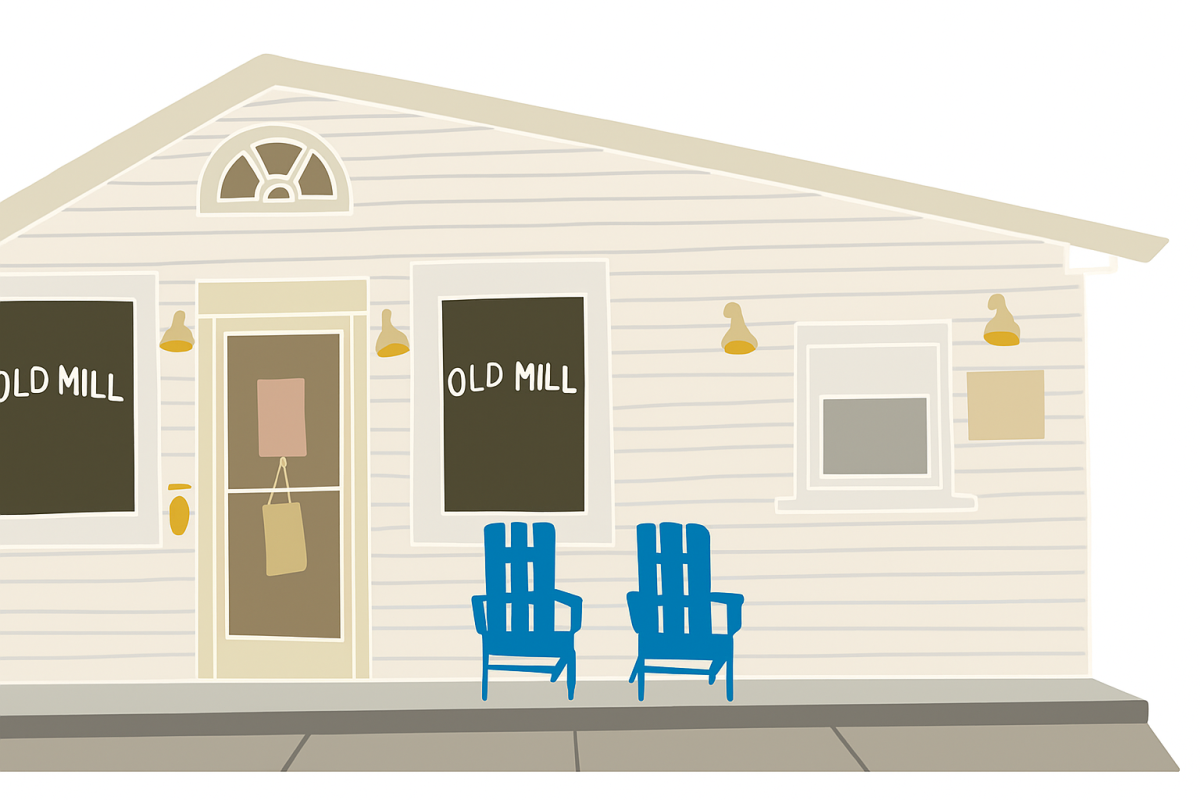
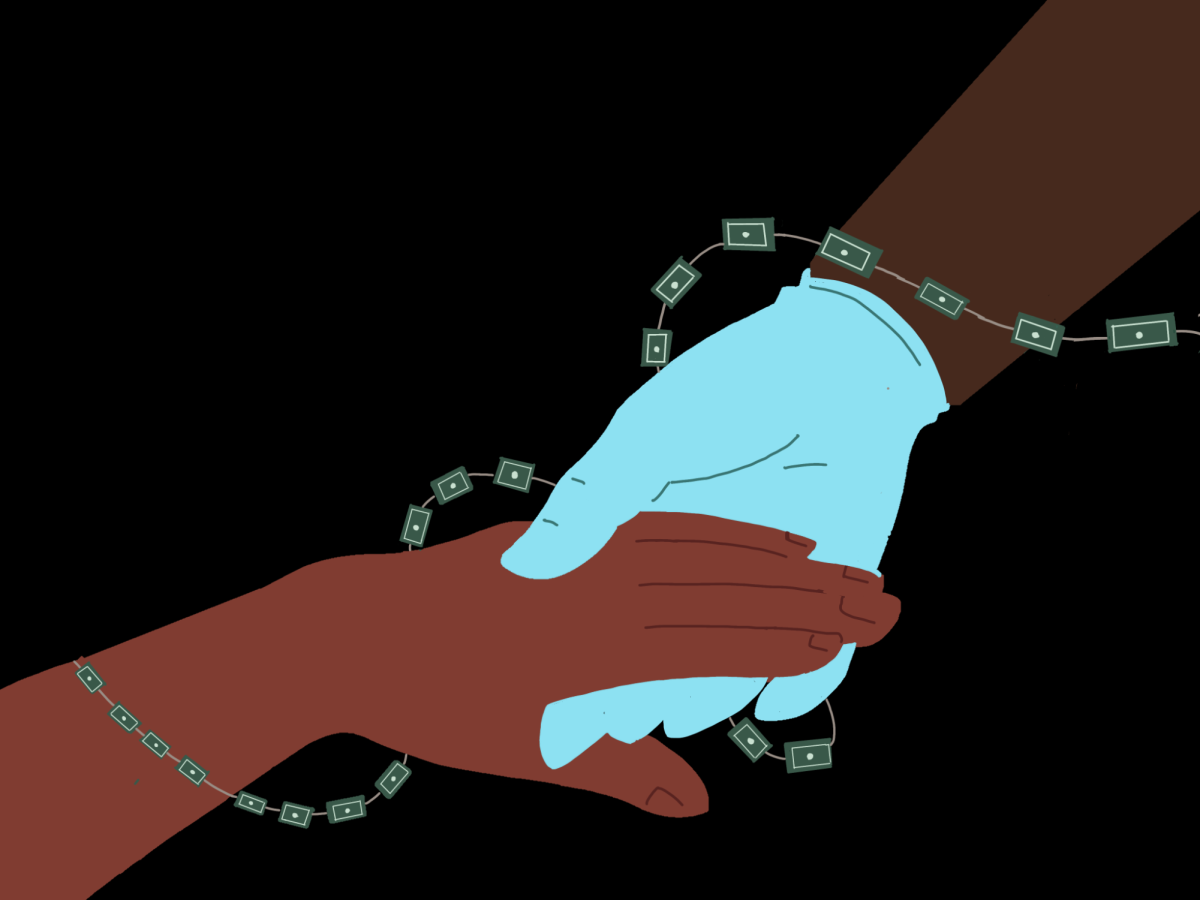
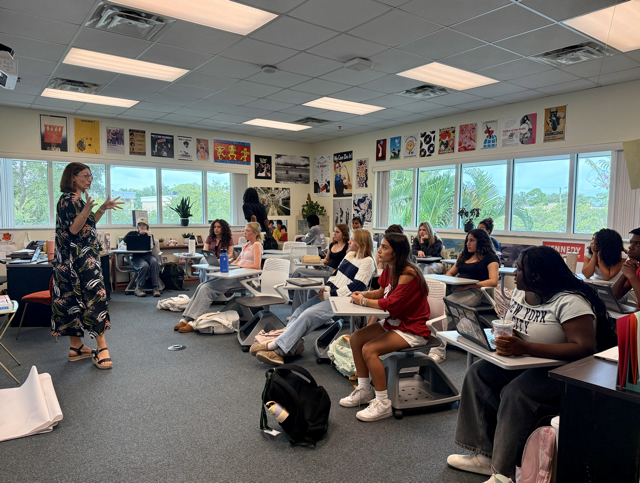
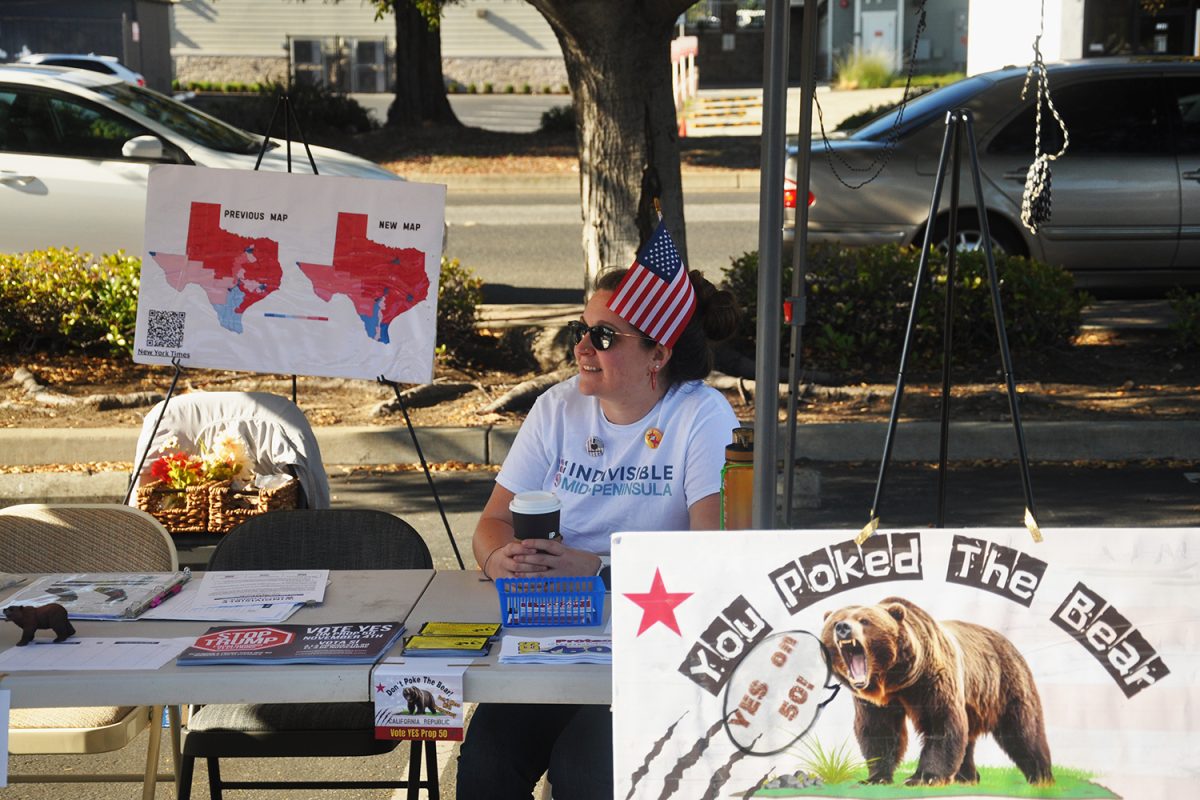
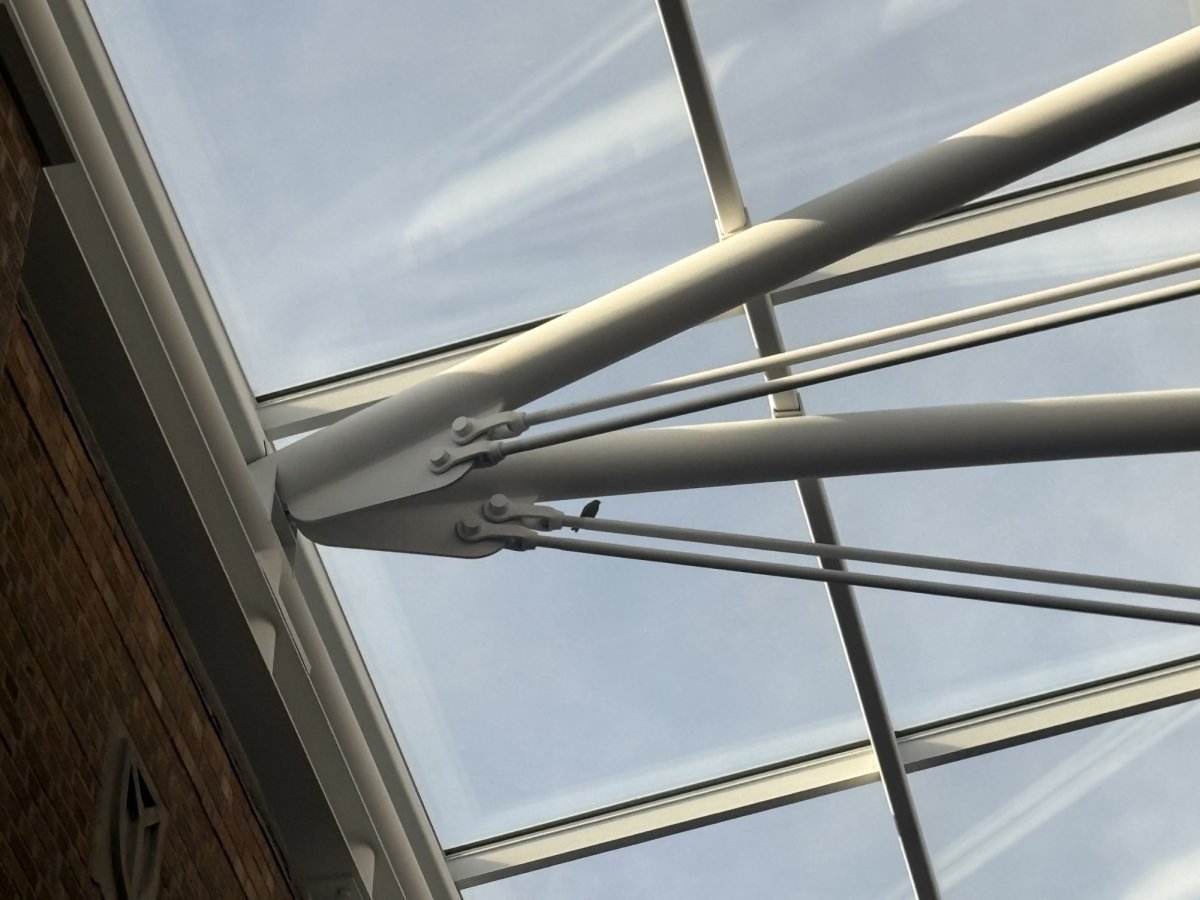


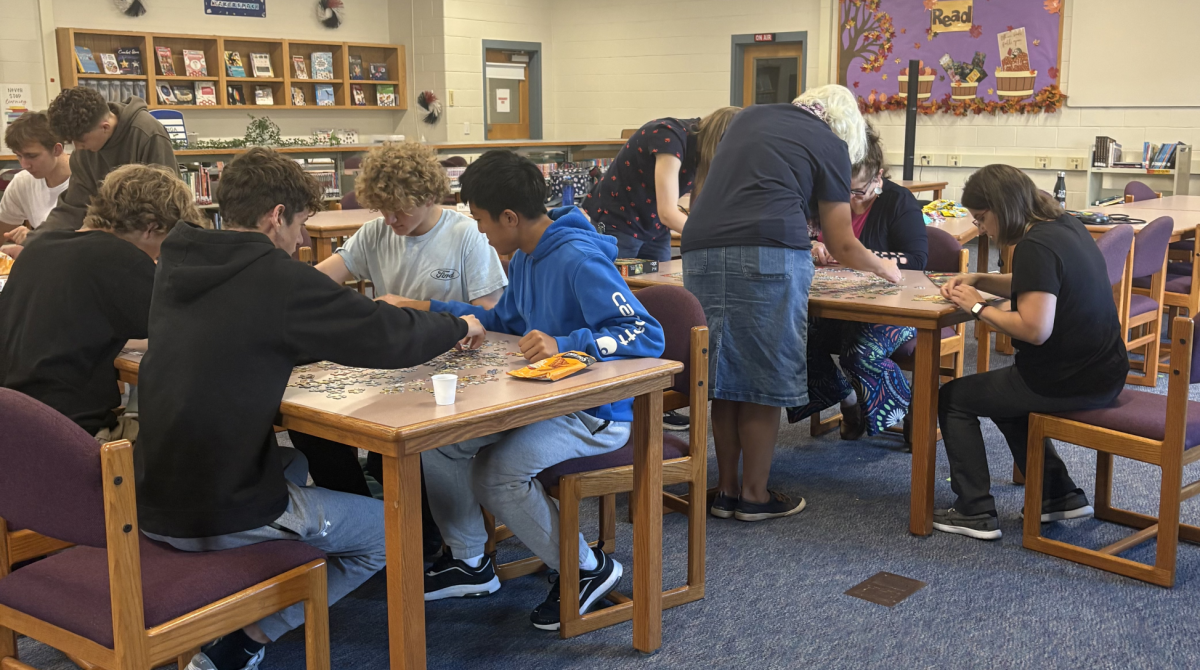
![Senior Dhiya Prasanna examines a bottle of Tylenol. Prasanna has observed data in science labs and in real life. “[I] advise the public not to just look or search for information that supports your argument, but search for information that doesn't support it,” Prasanna said.](https://bestofsno.com/wp-content/uploads/2025/10/DSC_0073-2-1200x800.jpg)
